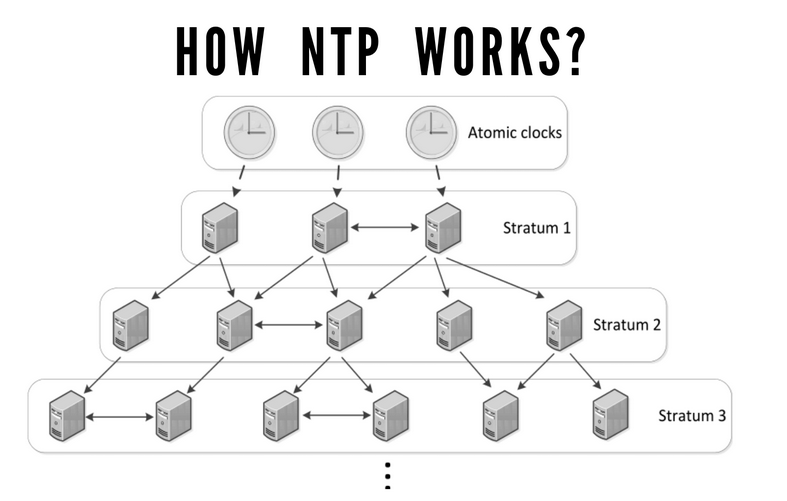NTP
What is NTP
Network Time Protocol (NTP) is a protocol used to synchronize the clocks of computers over a network. NTP ensures that all devices in a network, regardless of their location, maintain a consistent time. It works by connecting client devices to remote time servers, which provide highly accurate time information. These servers often synchronize their time with atomic clocks or GPS signals, ensuring extremely precise timekeeping. NTP uses a hierarchical system of servers, with stratum 0 being the most accurate time sources (such as GPS or atomic clocks) and stratum 1, 2, etc., being servers that synchronize with each other.
NTP operates by exchanging timestamps between the client and server to calculate network delays and correct the client’s time accordingly. The protocol compensates for network latency and adjusts the system clock based on the server’s time. It supports both symmetric and asymmetric time synchronization, where clients can also act as servers, enabling a scalable and decentralized architecture. This allows for accurate timekeeping in large networks, from local area networks (LANs) to global infrastructures.
In enterprise and data center environments, NTP is critical for ensuring system synchronization, particularly for time-sensitive applications like logging, security events, and financial transactions. Accurate timekeeping is also essential for maintaining consistency across distributed systems and databases. NTP is implemented using a range of software solutions, with popular implementations including ntpd, chrony, and systemd-timesyncd, each with its advantages in terms of speed, reliability, and resource efficiency.
It recommended to run only ONE NTP service on your computer at a time!
Also some package manager, like apt, might not behave correctly is no ntp service is running. It highly recommended to have a ntp service running.


How to install a ntp
Install ntpd
sudo apt install ntp
Install chrony
sudo apt install chrony
Install systemd-timesyncd
sudo apt install systemd-timesyncd
Install openntpd
sudo apt install openntpd
For precision and robustness chose
ntpd or chrony.
Chrony is the better option for more mobile networks like wifi. Widly used in enterprise world due to virtualized environments.
For minimal configurations or lightweight systems chose
systemd-timesyncd
Note:Comes usually as default for systemd systems
For simplicity and security over feature chose
openntpd
Service
All these ntp implementation can be operated through systemd tool
The service for
ntpd
ntp. Check the status with
sudo systemctl status ntp
chrony
chrony. Check the status with
sudo systemctl status chrony
systemd-timesyncd
systemd-timesyncd. Check the status with
sudo systemctl status systemd-timesyncd
openntpd
openntpd. Check the status with
sudo systemctl status openntpd
REMEMBER that only have one ntp service running. That why its a good thing to check status on different ntp service
In order to start a service(usually this get done automatically) you can do
sudo systemctl start ntp
sudo systemctl enable ntp
If you want to disable a service
sudo systemctl stop chrony
sudo systemctl disable chrony
Usually the default configuration should be sufficient! Otherwise check the documentation.
Commands
| DESCRIPTION | COMMAND |
|---|---|
|
Check NTP status * shows currently selected server |
ntpq -p |
| Start ntpd to synchronize the system time | sudo ntpd -g |
| Force synchronization and exit after a successful update | sudo ntpd -gq |
| View detailed NTP stats | ntpq -c "rv 0" |
Commands
| DESCRIPTION | COMMAND |
|---|---|
| Verify NTP Synchronization Status | timedatectl status |
| Force Synchronization | sudo systemctl restart systemd-timesyncd |
|
Viewing time and date configurations AND NTP info |
timedatectl show |

